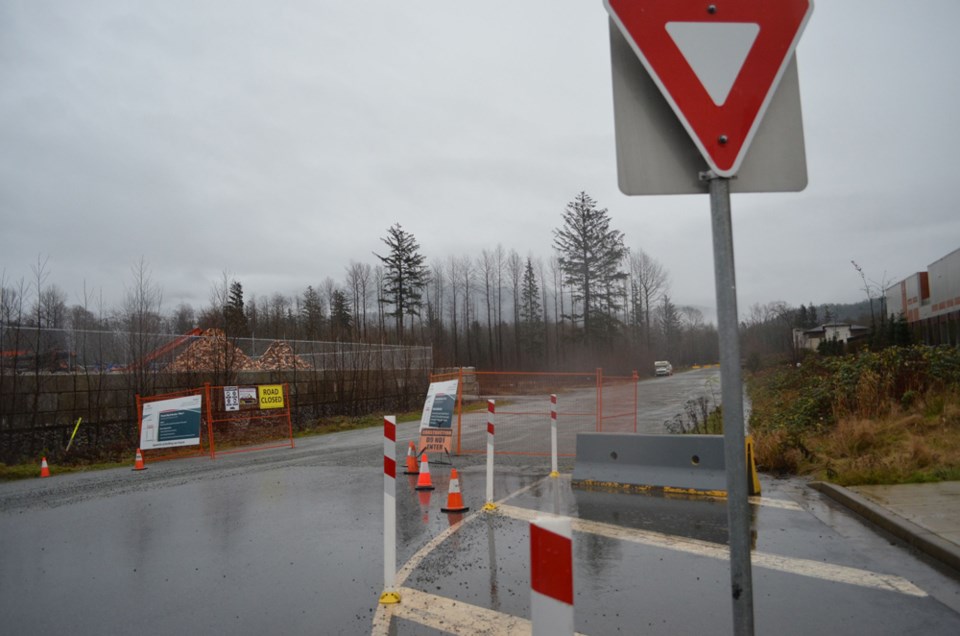Over the next few years, the District is estimating it will be pouring in about $10 million to give Pioneer Way an extensive makeover.
On a rainy Dec. 7, the mayor and the municipality's capital projects manager stood by the entrance of Pioneer Way at Queens Way.
Metal fences and no-entry signage had already been erected in front of the road, which was covered in gravel. Construction has already started.
Within the next year, the District intends to transform the route into an arterial road that will serve as one of the main entries in the �鶹�����Business Park.
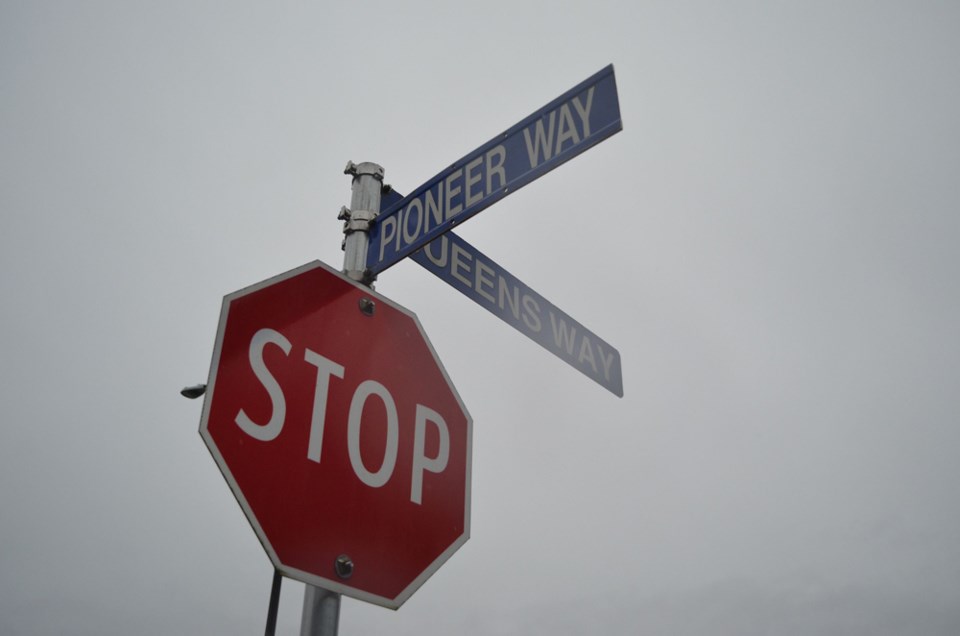
Officials say the idea is to reduce traffic in the nearby Northyards neighbourhood to the north by creating an alternate connection to the Business Park close to where Government Road and Centennial Way meet.
"It's providing a more direct way into the Business Park from Government Road," said Mayor Karen Elliott.
"And if people are coming off the highway, they'll still have to go up and around Centennial Way. But rather than moving through a residential neighbourhood, they'll be able to come directly down to this way and access the businesses that they're after."
She said it's necessary to reduce traffic in residential areas, especially on the stretch of Government that has children lining up around school bus stops.
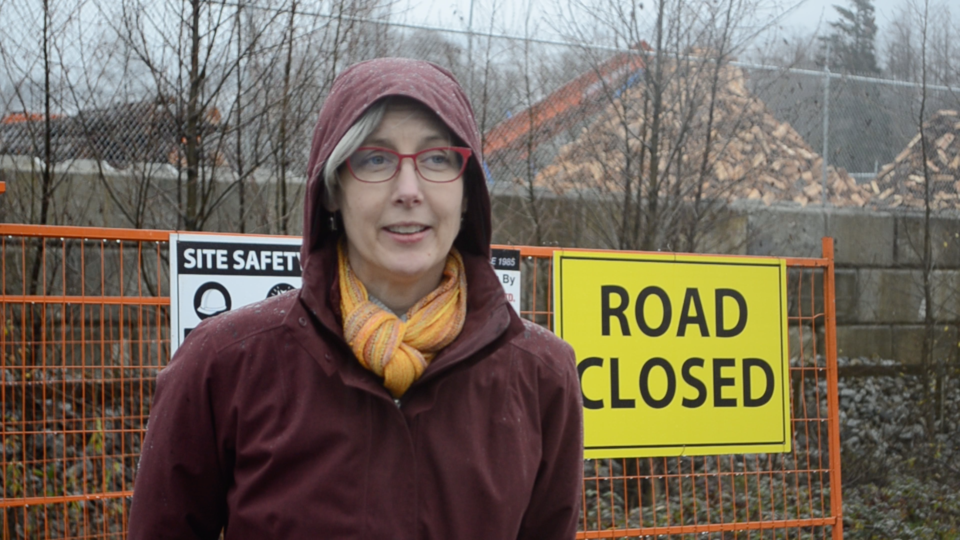
"I think it will improve safety," Elliott said.
She added it would also better connect the area to the municipality's active transportation routes, which generally refer to bike and pedestrian lanes.
This way, people arriving from the north end of Government Road have another way to enter the Business Park.
"A lot of people don't like driving on the highway," said Elliott.
"If we imagine reaching a population of 33,000, it's going to change how people move about this town. Hopefully, more people will be using our active transportation and transit network."
The District's capital projects manager Jesse Morwood noted that further down the line, there will eventually be dedicated bike lanes.
"We're initially building a multi-use path, but the future buildout actually has a bike path and walk on that side of the road as well," said Morwood. "So I think at that point, when we do the final connectivity or the lands adjacent develop, we'll put a unidirectional bike path on each side and so both sides will have pedestrian facility and one-way cyclist facility."
Elliott said this project was in response to projections of increased growth in Squamish, and it was identified as a priority in the 2031 District-Wide Multi-Modal Transportation Study, which was published back in 2011.
Indeed, if there's one thing that is expected for the town, it's the increased number of people expected to arrive in the community.
Further up north in Brackendale, the Cheekye Fan development is also expected to add a new neighbourhood. Traffic is anticipated to stream in from there to the Business Park.
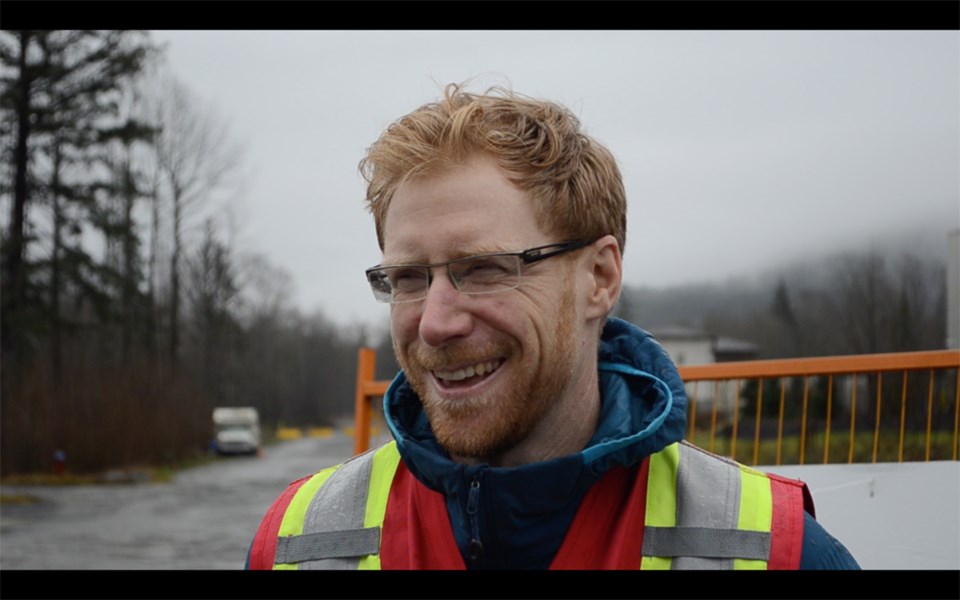
Within the Northyards neighbourhood, the Aspen Road area was recently designated as a neighbourhood node in the latest District rezoning overhaul.
The transportation study also recommended putting two lanes each way in the Pioneer project, but Morwood said the District won't implement that suggestion.
"The original multi-modal plan suggested that and... once we started to design the project, we realized it was really overkill for what we needed and what we wanted... so it's single-lane direction each way," Morwood said.
The first phase began on Nov. 23 along Pioneer Way, and it's expected to finish in June 2021.
Construction will shut down traffic on that street, from Queens Way all the way to Discovery Way.
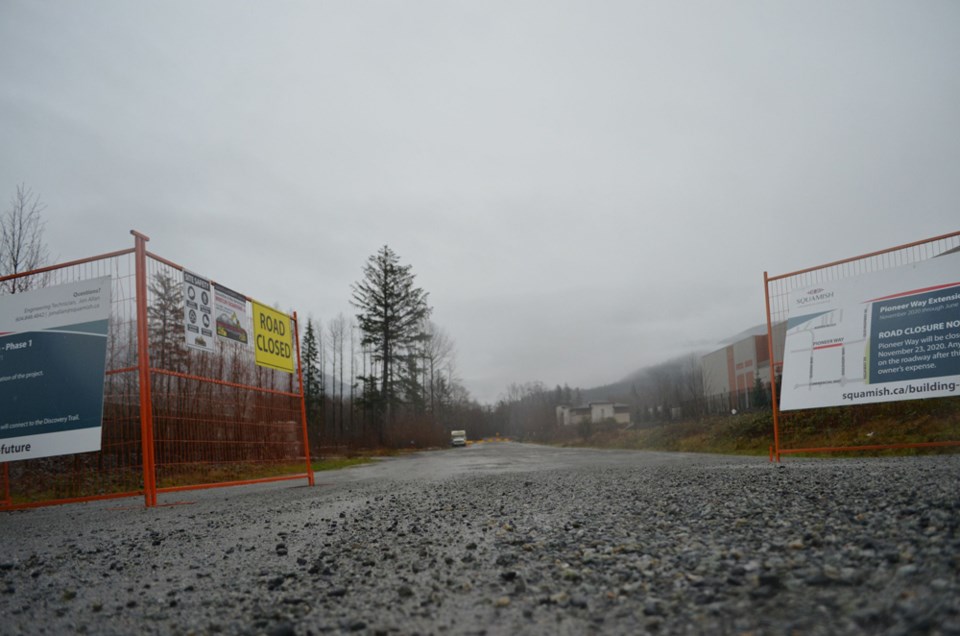
Work will include: installation of storm infrastructure; roadway lighting; infrastructure for a future signalized intersection at Queens Way and Pioneer Way; vegetation removal and grading; and construction of a paved multi-use pathway on the south side of Pioneer Way to Discovery Way.
This first phase is expected to cost $1.06 million and will be funded through development cost charges, which are all contributions made by developers.
These contributions help pay for growth-related infrastructure needs as more development occurs and the population increases.
Elliott added that property taxes collected this year were about equal to last year, leaving the municipality in a place where it would be capable of pursuing capital projects.
Using development cost charges for the first phase also ensures that taxpayers will not be paying out of pocket. However, it's unclear if DCCs will be funding future phases of the project.
